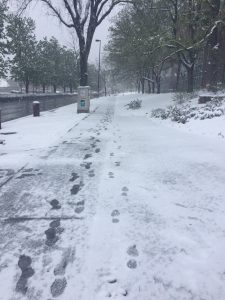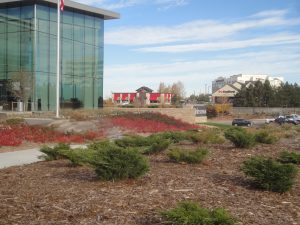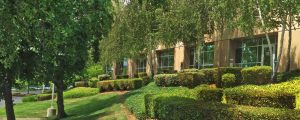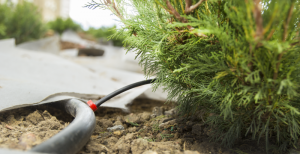Many property owners unintentionally over water their landscape every time their sprinkler system turns on. Using an automated irrigation system is one of the best ways to keep your lawn and landscape beautiful and healthy. A good irrigation system is also one of the best ways to keep watering costs low and protect the environment.
Are you planning to upgrade or make significant repairs to your irrigation system this year? There are a number of things you should consider before you invest in an irrigation system.
 Investing in a good irrigation system
Investing in a good irrigation system
Plan carefully for a reliable, flexible irrigation system that can grow along with your property. The old adage, “You get what you pay for,” is often true, especially when you are investing in an irrigation system that can last for many years.
By using the best components you can afford, you minimize future maintenance and extend the lifetime cost of your system.
Plan for plant health
Designing an efficient irrigation system requires understanding of irrigation design principles and local environmental conditions. Even the best irrigation design won’t perform well if installed incorrectly or with inferior components. Something as simple as selecting the correct type of pipe can mean the difference between a system that lasts and one that requires ongoing repairs.
In addition to proper irrigation components, you should also consider your property’s features. You should select the appropriate trees, turf and plants that have right requirements for your area.
Plan your irrigation zones carefully, grouping plants with similar water needs together. Be sure your system will have enough capacity, both now and in the future. The more irrigation zones you plan, the more you can tailor watering even if you modify landscaping.
- Include “smart” controls that automatically adjust watering based on rain, soil moisture, evaporation and plant water use.
- Use quality components to minimize future maintenance needs and the total lifetime cost of your system.
Plan for Growth and Flexibility
Allow for future landscape redesigns and changes to your property. The plants, turf areas and trees on your property each have different watering needs. Over time, these needs may change and your system should have the flexibility to change along with them.
Keep future expansion in mind when you install a new irrigation system. You will want to allow for excess irrigation zone capacity, including extra connections in your system design, to make it easier and less expensive to expand in the future.
Select an appropriate system for your property’s water pressure. Having water pressure that is either too low or too high can seriously affect an irrigation system’s performance.
If you have questions about how to improve your irrigation system, contact Terracare Associate’s irrigation specialists.






